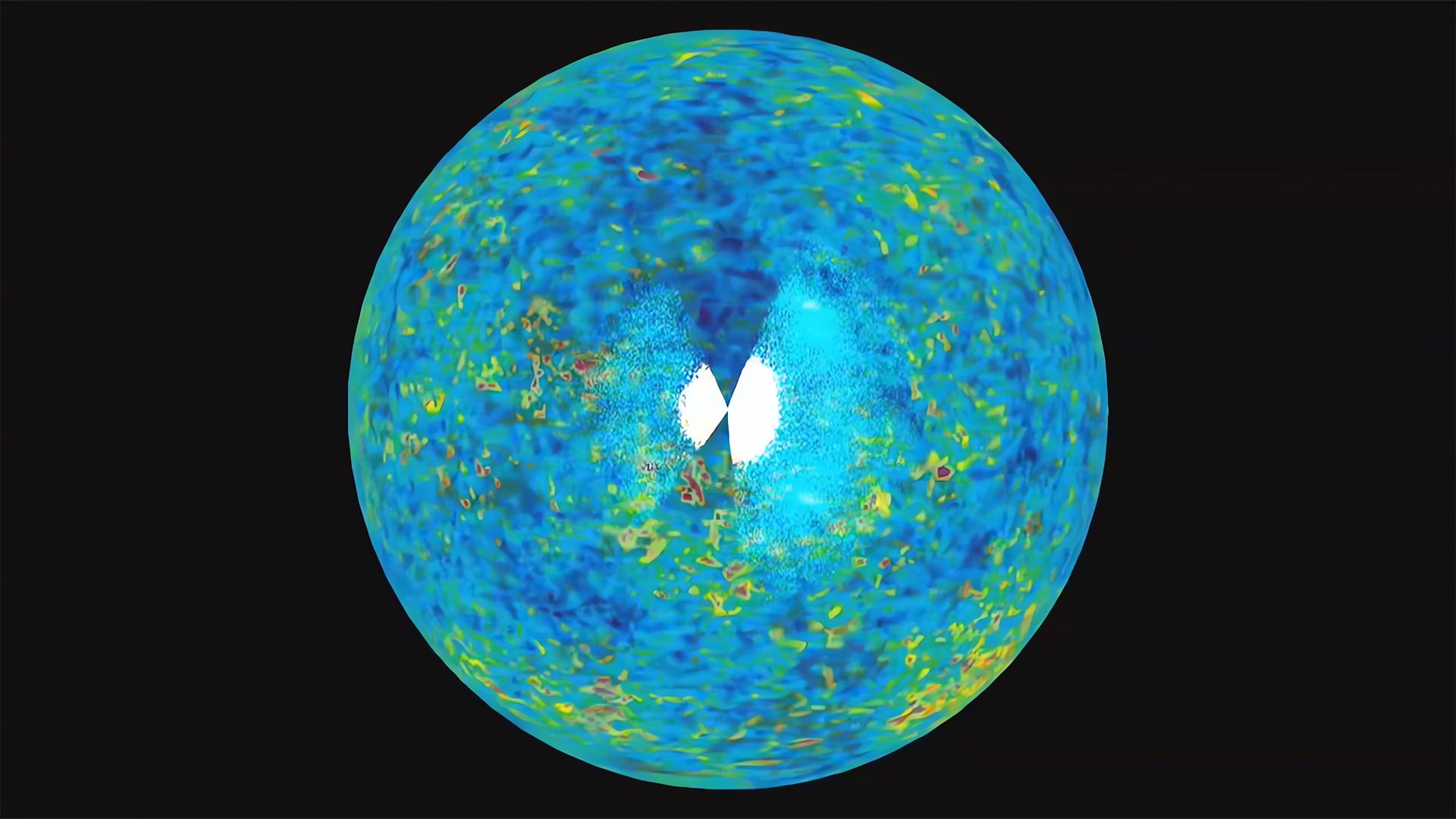Los investigadores utilizaron las simulaciones para explorar la red cósmica, el patrón filamentoso de galaxias que se encuentra a gran escala en todo el universo. Al tratar la distribución de las galaxias como conjuntos de puntos y aplicar técnicas matemáticas desarrolladas para la ciencia de los materiales, han identificado el desorden relativo del universo y han obtenido una mejor comprensión de su estructura básica. Crédito: NASA/Universidad de Chicago y el Museo de Astronomía y Planetario Adler
El universo está lleno de galaxias, que a gran escala exhiben un patrón filamentoso, denominado red cósmica. Esta distribución heterogénea de material cósmico es, en cierto modo, como arándanos en un pastel donde el material se acumula en ciertas áreas pero puede faltar en otras.
Sobre la base de una serie de simulaciones, los investigadores comenzaron a probar la estructura heterogénea del universo al tratar la distribución de las galaxias como conjuntos de puntos, como partículas individuales de materia que componen la materia, en lugar de como una distribución continua. Esta técnica permitió aplicar las matemáticas desarrolladas para la ciencia de los materiales para determinar el desorden relativo del universo, lo que permitió una mejor comprensión de su estructura básica.

Una visualización de las estructuras más grandes del universo del Sloan Digital Sky Survey. Crédito: NASA/Universidad de Chicago y el Museo de Astronomía y Planetario Adler
«Lo que encontramos es que la distribución de las galaxias en el universo es muy diferente de las propiedades físicas de los materiales convencionales, que tienen su propia firma única», explicó Oliver Vilkox, coautor del estudio.
Este trabajo está ahora publicado en X revisión físicarealizado por Salvatore Torquato, miembro y visitante frecuente del Instituto de Estudios Avanzados y Profesor Louis Bernard de Ciencias Naturales con sede en[{» attribute=»»>Princeton University’s departments of chemistry and physics; and Oliver Philcox a visiting Ph.D. student at the Institute from September 2020 to August 2022, now a Junior Fellow in the Simons Society of Fellows, hosted at Columbia University.
Esta visualización proporciona una vista en 3D de las estructuras más grandes del universo. Comienza con datos de la encuesta Sloan Digital Sky y se aleja para revelar datos de WMAP. crédito:[{» attribute=»»>NASA/University of Chicago and Adler Planetarium and Astronomy Museum
The pair analyzed public simulation data generated by Princeton University and the Flatiron Institute. Each of the 1,000 simulations consists of a billion dark matter “particles,” whose clusters, formed by gravitational evolution, serve as a proxy for galaxies.
One of the main results of the paper concerns the correlations of pairs of galaxies that are topologically connected to one another by means of the pair-connectedness function. Based on this—and the array of other descriptors that arise in the theory of heterogeneous media—the research team showed that on the largest scales (on the order of several hundred megaparsecs), the universe approaches hyperuniformity, while on smaller scales (up to 10 megaparsecs) it becomes almost antihyperuniform and strongly inhomogeneous.

A section of the universe (black and white), with dark matter halos indicated by points and their associated large-scale topological structures indicated by colors. Credit: Philcox & Torquato; The Quijote Simulations
“The perceived shift between order and disorder depends largely on scale,” stated Torquato. “The pointillist technique of Georges Seurat in the painting A Sunday on La Grande Jatte (see image below) produces a similar visual effect; the work appears disordered when viewed up-close and highly ordered from afar. In terms of the universe, the degree of order and disorder is more subtle, as with a Rorschach inkblot test that can be interpreted in an infinite number of ways.”

“A Sunday on La Grande Jatte” by Georges Seurat.
Statistical tools, specifically nearest-neighbor distributions, clustering diagnostics, Poisson distributions, percolation thresholds, and the pair-connectedness function, allowed the researchers to develop a consistent and objective framework for measuring order. Therefore, their findings, while made in a cosmological context, translate to a number of other dynamical, physical systems.
This interdisciplinary work, combining the techniques of cosmology and condensed matter physics, has future implications for both fields. Beyond the distribution of galaxies, many other features of the universe can be explored with these tools, including cosmic voids and the ionized hydrogen bubbles that formed during the reionization phase of the universe. Conversely, the novel phenomena discovered about the universe may also provide insight into various material systems on Earth. The team recognizes that more work will be needed before these techniques can be applied to real data, but this work provides a strong proof-of-concept with significant potential.
Reference: “Disordered Heterogeneous Universe: Galaxy Distribution and Clustering across Length Scales” by Oliver H. E. Philcox and Salvatore Torquato, 14 March 2023, Physical Review X.
DOI: 10.1103/PhysRevX.13.011038

«Solucionador de problemas. Gurú de los zombis. Entusiasta de Internet. Defensor de los viajes sin disculpas. Organizador. Lector. Aficionado al alcohol».

